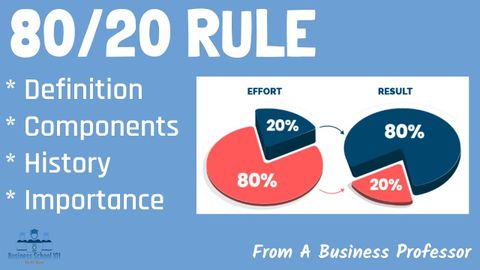什麼是 80/20 原則(帕累託原則)?| 一位商學教授的觀點 (What is 80/20 Rule (The Pareto Principle)? | From A Business Professor)
 沒有此條件下的單字
沒有此條件下的單字US /pəˈtɛnʃəl/
・
UK /pəˈtenʃl/
- adj.可能的;潛在的;潛在的
- n. (u.)潛力,潛能
- n. (c./u.)潛力;潛能;潛在候選人;勢
US /sɪɡˈnɪfɪkənt/
・
UK /sɪgˈnɪfɪkənt/
US /ɪˈsɛnʃəl/
・
UK /ɪ'senʃl/
US /praɪˈɔ:rətaɪz/
・
UK /praɪˈɒrətaɪz/
